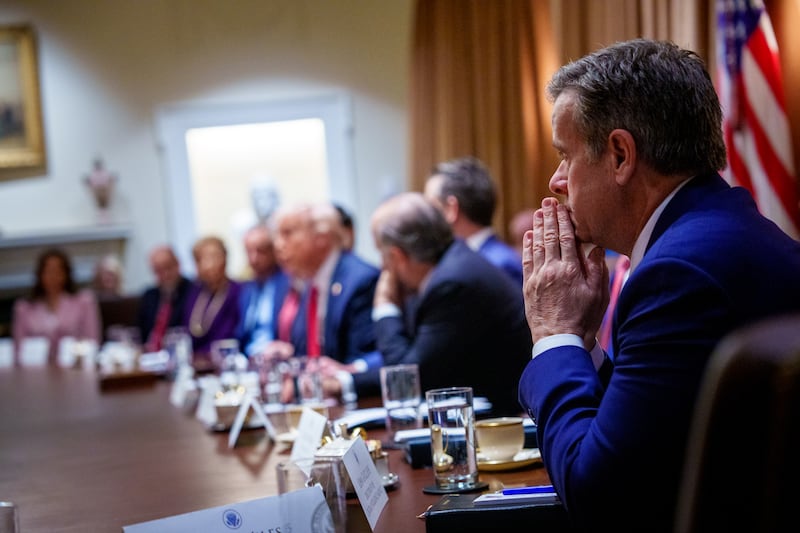When it comes to the business of espionage, diversity isn’t just a buzz word—it’s crucial to getting the job done. The CIA operates in every corner of the globe, which means we need intelligence officers who can blend in physically and linguistically. Arguably just as important is the need for diversity of thought and life experience as broad as the targets we’re pursuing. In order to recruit individuals with access to foreign intelligence, CIA case officers need an ability to connect with their targets on a human level, understanding their motivations, vulnerabilities, and worldview, all with a goal of protecting America’s national security.
President Trump‘s executive order halting diversity, equity, inclusion and accessibility initiatives across the government and CIA Director John Ratcliffe‘s implementation thereof, then, demonstrate a clear lack of understanding of how the intelligence community works.
What’s more, it risks reverting decades of progress at the spy organization, making the United States more vulnerable to a host of global threats.
Over the past three years, I’ve interviewed dozens of female CIA officers about the often-turbulent road they traversed at the historically male-dominated agency—a road I know intimately as a former officer myself. A common theme that emerged during these conversations was a belief that women possess a unique ability to excel in their roles.
“There are more options for what women can do (operationally),” explained Sue McCloud, a retired CIA officer who was one of six women in her class of about sixty. “A woman can get away with murder compared to the guys. They were innocuous on the street corner for dead drops or brush passes.” Women also found that targets and recruited assets were sometimes more likely to open up to them than a male counterpart, either because they were oblivious to the possibility of women being spies or because they found women to be more nurturing.
“I think women are better listeners and better readers of character right off the bat,” McCloud said. “We have a natural curiosity about people. Men are often trying to see who is going to out-impress the other one.”

And yet, for decades, the CIA’s workforce was dominated by men, mostly white men, while highly educated and capable women were relegated to secretarial roles. Even the most decorated female spy in history, Virginia Hall, whose intelligence contributions during World War II were instrumental, was confined to a desk at headquarters for fifteen years after the war, answering to managers with far less experience in operations.
In more recent years, the CIA has made considerable headway when it comes to women in senior roles and across the Agency. In 2018, during President Trump’s first term, Gina Haspel was appointed as the CIA’s first female director, and later that same year, Elizabeth Kimber became the CIA’s first female deputy director for operations. (Both women served in their respective roles until 2021.) Women currently make-up nearly half of the organization and minority employees have steadily been on the rise. As of 2024, women accounted for 40.6 percent of Senior Intelligence Service officers.
Some of the positive changes at the CIA can be traced to efforts of the agency’s Diversity Inclusion Office (DIO), which sought to leverage the skills and abilities of CIA officers to ensure an inclusive work environment. “The work we were doing helped all officers and made America safer,” a CIA employee who spoke on the condition of anonymity told The Daily Beast. The officer and more than a dozen others temporarily assigned to the DIO were placed on administrative leave just days after Trump’s inauguration this past January. Combined, they have multiple decades of service to the organization, representing what some fear is the beginning of a brain drain.
And just yesterday, The Washington Post reported that the Trump administration plans to cut an additional 1,200 roles at the CIA.
Other improvements at the CIA have been driven by women themselves, often through employee resource groups. The Directorate of Operations Women’s Advisory Council, for example, was started by a group of intrepid women in the eighties. It spearheaded efforts to highlight issues facing women, including the lack of women and minorities on promotion panels and in sexual harassment hearings, among other issues. Later, a separate women’s mentoring group arose to encourage women in leadership roles to “send the elevator back down,” for junior officers. And more recently, internal grassroots efforts led to the creation of lactation rooms and a program to support nursing mothers on travel. These impactful employee resource groups, however, were disbanded earlier this year—another casualty of the Trump administration that erases hard-fought progress, seemingly in an instant.
The old boys’ club environment that Trump is seemingly seeking to recreate at the CIA, and in the government more broadly, is fundamentally mismatched for the world we live in today. “We cannot fulfill our international global mission of protecting America and the world without the ability to leverage the knowledge, skills, and abilities of our officers—and that includes cultural competencies,” a CIA officer directly involved with the Agency’s diversity initiatives told me. “The only way we can possibly do that is by leveraging the diversity of the nation.”
Christina Hillsberg is a former CIA intelligence officer and the author of the forthcoming Agents of Change: The Women Who Transformed the CIA, available June 24, 2025.
The post Opinion: Trump’s DEI Rollbacks Threaten Decades of CIA Progress—and Weaken National Security appeared first on The Daily Beast.




